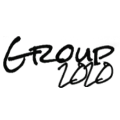Combining Global Navigation Satellite System (GNSS) with visual and inertial sensors can give smooth pose estimation without drifting. The fusion system gradually degrades to Visual-Inertial Odometry (VIO) with the number of satellites decreasing, which guarantees robust global navigation in GNSS unfriendly environments. In this letter, we propose an open-sourced invariant filter-based platform, InGVIO, to tightly fuse monocular/stereo visual-inertial measurements, along with raw data from GNSS. InGVIO gives highly competitive results in terms of computational load compared to current graph-based algorithms, meanwhile possessing the same or even better level of accuracy. Thanks to our proposed marginalization strategies, the baseline for triangulation is large although only a few cloned poses are kept. Moreover, we define the infinitesimal symmetries of the system and exploit the various structures of its symmetry group, being different from the total symmetries of the VIO case, which elegantly gives results for the pattern of degenerate motions and the structure of unobservable subspaces. We prove that the properly-chosen invariant error is still compatible with all possible symmetry group structures of InGVIO and has intrinsic consistency properties. Besides, InGVIO has strictly linear error propagation without linearization error. InGVIO is tested on both open datasets and our proposed fixed-wing datasets with variable levels of difficulty and various numbers of satellites. The latter datasets, to the best of our knowledge, are the first datasets open-sourced to the community on a fixed-wing aircraft with raw GNSS.
翻译:结合全球导航卫星系统(GNSS)与视觉和惯性传感器,可以在不漂移的情况下作出平滑的估计。聚合系统随着卫星数量减少,逐渐降解为视觉不透度测量(VIO),这保证了全球导航卫星系统不友好环境中的强力全球导航。在本信中,我们提议建立一个开放源源的不变化过滤平台(InGVIO),与全球导航卫星系统的原始数据一道,紧紧结合单向/视视-视-内皮测量。在计算负荷方面,与当前基于图形的算法相比,得出高度竞争性的结果,同时具有相同甚至更好的精确度。由于我们提议的边缘化战略,三角测量基线是巨大的,尽管只保留了少量的克隆布局。此外,我们定义了该系统的极细微结构(InGVI),并利用其对各种对称性组结构的结构,这不同于VIO案件的总体对变形运动模式和不可观察的子空间结构结构,同时拥有相同或更好的精确度的精确度水平。我们证明,在可变式轨道的轨道上的所有数据都具有可兼容性的轨道结构。





